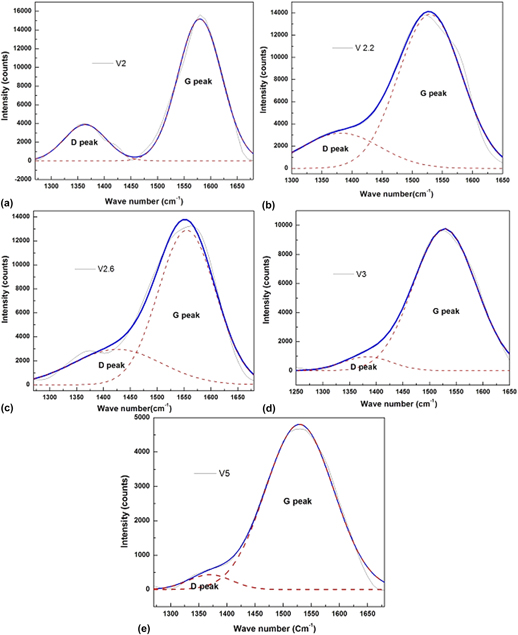Crossref Citations
This article has been cited by the following publications. This list is generated based on data provided by
Crossref.
Li, Mingming
Jiang, Lihua
Sun, Yihua
Xiao, Ting
Xiang, Peng
and
Tan, Xinyu
2018.
Silicon content influence on structure and photoluminescence properties of carbon rich hydrogenated amorphous silicon carbide thin films.
Journal of Alloys and Compounds,
Vol. 753,
Issue. ,
p.
320.
Schlebrowski, T.
Beucher, L.
Bazzi, H.
Hahn, B.
Wehner, S.
and
Fischer, C.B.
2019.
Prediction of a-C:H layer failure on industrial relevant biopolymer polylactide acide (PLA) foils based on the sp2/sp3 ratio.
Surface and Coatings Technology,
Vol. 368,
Issue. ,
p.
79.
Schlebrowski, Torben
Kassab, Zineb
El Achaby, Mounir
Wehner, Stefan
and
Fischer, Christian B.
2020.
Influence of cellulose microfiber reinforcement for polyvinyl alcohol on the layer growth of plasma-deposited a-C:H.
Diamond and Related Materials,
Vol. 109,
Issue. ,
p.
108065.
Schlebrowski, Torben
Acharchi, Halima
Hahn, Barbara
Wehner, Stefan
and
Fischer, Christian B.
2020.
Refinement of Sustainable Polybutylene Adipate Terephthalate (PBAT) with Amorphous Hydrogenated Carbon Films (a-C:H) Revealing Film Instabilities Influenced by a Thickness-Dependent Change of sp2/sp3 Ratio.
Materials,
Vol. 13,
Issue. 5,
p.
1077.
Schlebrowski, Torben
Kassab, Zineb
El Achaby, Mounir
Wehner, Stefan
and
Fischer, Christian B.
2020.
Effect of Cellulose Nanocrystals on the Coating of Chitosan Nanocomposite Film Using Plasma-Mediated Deposition of Amorphous Hydrogenated Carbon (a–C:H) Layers.
C — Journal of Carbon Research,
Vol. 6,
Issue. 3,
p.
51.
Schlebrowski, Torben
Lüber, Henriette
Beucher, Lucas
Fritz, Melanie
Benjillali, Youssef
Bentaouit, Mohammed
Hahn, Barbara
Wehner, Stefan
and
Fischer, Christian B.
2021.
Plasma Supported Deposition of Amorphous Hydrogenated Carbon (a-C:H) on Polyamide 6: Determining Interlayer Completion and Dehydrogenation Effects during Layer Growth.
Polymers,
Vol. 13,
Issue. 11,
p.
1886.
Schlebrowski, Torben
Fritz, Melanie
Beucher, Lucas
Wang, Yongxin
Wehner, Stefan
and
Fischer, Christian B.
2021.
The Growth Behavior of Amorphous Hydrogenated Carbon a-C:H Layers on Industrial Polycarbonates—A Weak Interlayer and a Distinct Dehydrogenation Zone.
C,
Vol. 7,
Issue. 3,
p.
59.
Schlebrowski, Torben
Ouali, Rachida
Hahn, Barbara
Wehner, Stefan
and
Fischer, Christian B.
2021.
Comparing the Influence of Residual Stress on Composite Materials Made of Polyhydroxybutyrate (PHB) and Amorphous Hydrogenated Carbon (a-C:H) Layers: Differences Caused by Single Side and Full Substrate Film Attachment during Plasma Coating.
Polymers,
Vol. 13,
Issue. 2,
p.
184.
Schlebrowski, T.
Wehner, S.
and
Fischer, C.B.
2023.
Thin amorphous hydrogenated carbon layers on polylactic acid and polyhydroxybutyrate biopolymers - influence of substrate chemistry on interlayer formation.
Thin Solid Films,
Vol. 780,
Issue. ,
p.
139943.






